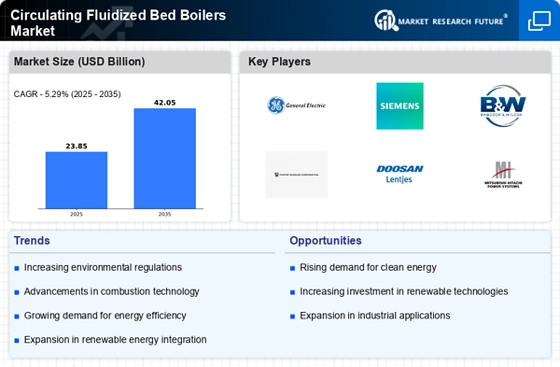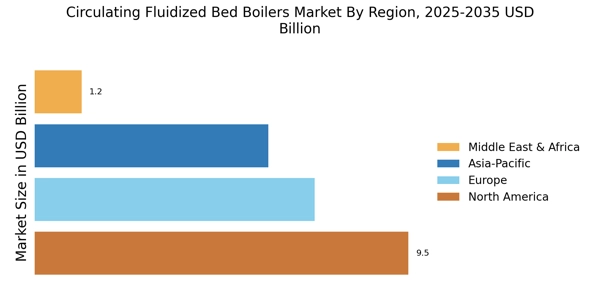Rising Energy Demand
The Circulating Fluidized Bed Boilers Market is poised for growth due to the rising energy demand across various sectors. As industrialization and urbanization continue to expand, the need for efficient and reliable energy sources becomes increasingly critical. Circulating fluidized bed boilers are particularly well-suited for meeting this demand, as they can utilize a variety of fuels, including biomass and waste materials, thereby enhancing energy security. According to recent estimates, the global energy demand is expected to increase by 30% by 2040, which will likely drive the adoption of circulating fluidized bed boilers as a viable solution for energy generation. This trend indicates a robust market potential for manufacturers and suppliers in the coming years.
Technological Innovations
The Circulating Fluidized Bed Boilers Market is experiencing a surge in technological innovations that enhance efficiency and reduce emissions. Advanced control systems and automation technologies are being integrated into boiler designs, allowing for better fuel management and operational efficiency. These innovations not only improve the performance of circulating fluidized bed boilers but also align with stringent environmental regulations. As a result, the market is projected to grow at a compound annual growth rate of approximately 5.2% over the next five years, driven by the demand for cleaner energy solutions. Furthermore, the development of new materials and designs is likely to extend the lifespan of these boilers, making them a more attractive investment for energy producers.
Focus on Waste-to-Energy Solutions
The Circulating Fluidized Bed Boilers Market is witnessing a growing focus on waste-to-energy solutions, which is reshaping the landscape of energy production. As waste management becomes a pressing issue, circulating fluidized bed boilers offer a sustainable method for converting waste materials into energy. This technology not only helps in reducing landfill waste but also contributes to energy generation, aligning with sustainability goals. The increasing emphasis on circular economy principles is likely to drive investments in waste-to-energy projects, further propelling the demand for circulating fluidized bed boilers. As municipalities and industries seek innovative solutions to manage waste, the market for these boilers is expected to expand significantly.
Regulatory Support for Clean Energy
The Circulating Fluidized Bed Boilers Market is benefiting from increasing regulatory support aimed at promoting clean energy technologies. Governments are implementing policies that encourage the adoption of low-emission technologies, including circulating fluidized bed boilers, which are known for their ability to burn a wide range of fuels with lower emissions. This regulatory environment is fostering investments in cleaner technologies, as companies seek to comply with environmental standards. In many regions, incentives such as tax breaks and grants are being offered to facilitate the transition to cleaner energy sources. Consequently, this supportive regulatory framework is expected to drive market growth, as more industries adopt circulating fluidized bed boilers to meet compliance requirements.
Increased Investment in Renewable Energy
The Circulating Fluidized Bed Boilers Market is experiencing increased investment in renewable energy projects, which is likely to enhance the demand for advanced boiler technologies. As countries strive to transition to more sustainable energy systems, there is a growing recognition of the role that circulating fluidized bed boilers can play in utilizing renewable resources such as biomass. This shift is supported by financial investments from both public and private sectors, aimed at developing infrastructure that supports renewable energy generation. The market is projected to benefit from these investments, as more energy producers look to integrate circulating fluidized bed boilers into their operations to achieve sustainability targets and reduce carbon footprints.


















Leave a Comment